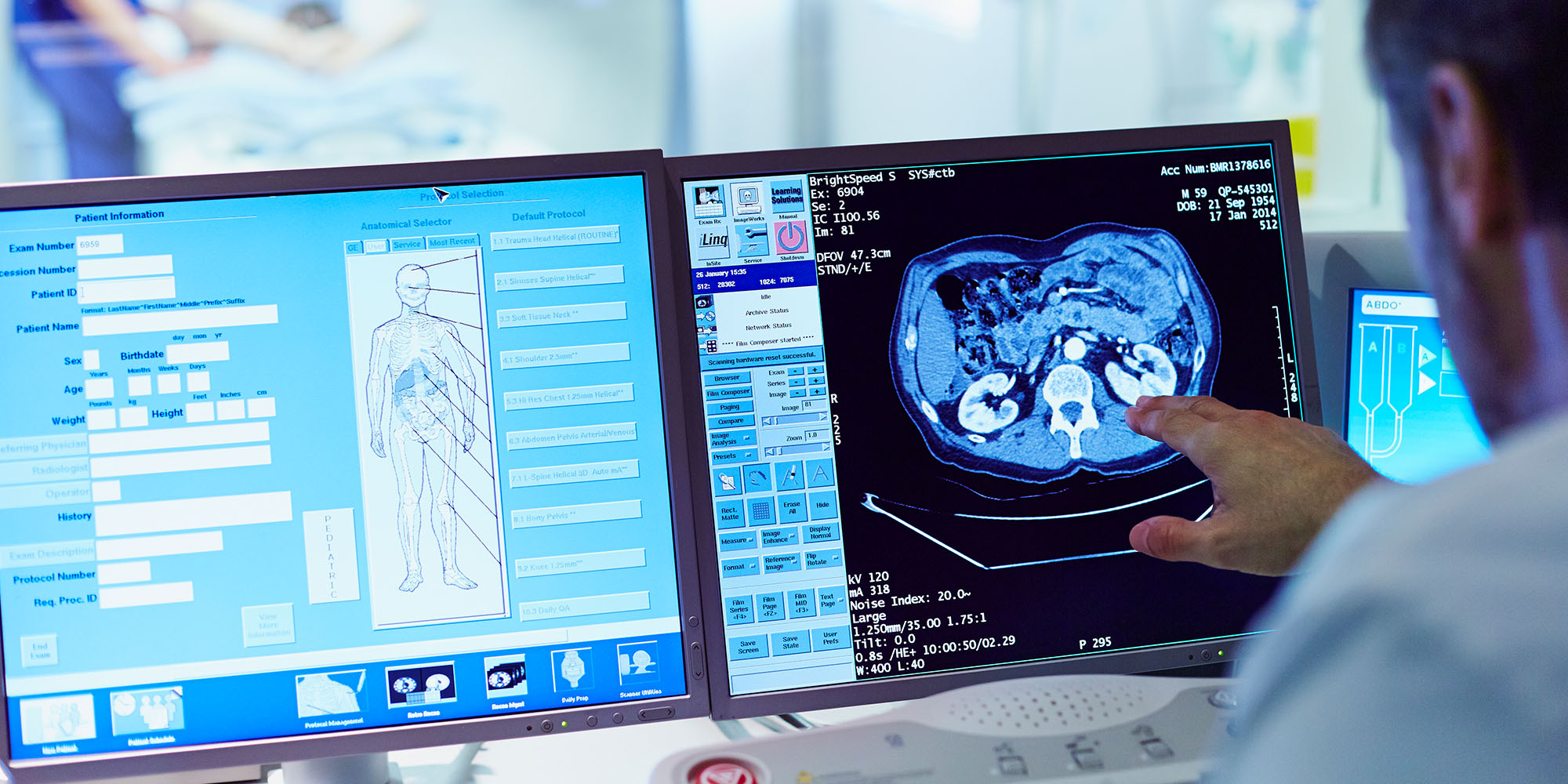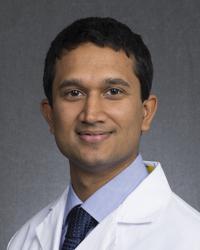A Glance Into the Complex but Fascinating World of Medical Imaging
May 1, 2022
Categories: Health & Wellness

Since the discovery of the X-ray in 1895, medical imaging has transformed how your doctor cares for you. In the past, diagnosis often involved invasive procedures and an educated guess.
Thanks to research and advances in technology, modern imaging has taken much of the guesswork out of diagnosing health conditions.
Today’s imaging tests are noninvasive, highly precise and come in a range of options.
What are the most common modern imaging tests?
If you are like most adults, you’ve probably had a general imaging test at some point. Have you ever wondered how the test works? Or why your doctor ordered one type of test and not another?
Here, Loyola Medicine radiologist, Emad Allam, MD, explains the following tests, including the pros and cons of each:
How X-rays work
X-rays are similar to light rays. Both are types of electromagnetic radiation, but X-rays have a higher energy level. Because of this, they can penetrate your skin. Solid parts of your body, like bones, absorb more radiation. Softer tissues, like lungs, allow more of the radiation to pass through.
A film or sensor captures the radiation passing through your body and registers the image. The resulting shadows and variations in gray scale show the details of your body.
Pros of X-rays
Some body parts, such as bones, show up very well on X-rays. Breaks and fractures are usually clearly visible. Your doctor can also see the size and structure of the organs in your abdomen and chest. X-rays are also quick and inexpensive.
Cons of X-rays
X-rays are a 2-dimensional image of a 3-dimensional person, so some detail is lost. Because of this, doctors often use X-rays as a screening tool. For example, if you have chest pain, a chest X-ray can help rule out some of the major triggers. A collapsed lung or pneumonia might be causing your chest pain and would be visible on an X-ray. With those conditions excluded, your doctor can then order more detailed studies to find out the source of your chest pain.
X-rays come with a small amount of radiation exposure that can increase your risk of cancer. Radiologists are very conscious of this. The standard practice in radiology is to deliver a dose of radiation as low as reasonably achievable (ALARA), especially for pregnant women and children. The radiation exposure you receive from an X-ray today is extremely low.
How ultrasounds work
Ultrasound technology uses sound waves to produce images. A hand-held instrument called a transducer emits the sound waves. These waves bounce off of dense structures but move through softer tissues. The transducer captures the sound echoes and sends them to a computer display. Your provider can review the images as pictures or videos.
Pros of ultrasound
Because ultrasound does not use radiation, it is safe even for pregnant women. Ultrasound is an important test for monitoring fetal development during pregnancy.
It is also effective for assessing abdominal organs, breasts and the reproductive system. In addition, doctors may use ultrasound to guide biopsies and other medical procedures.
Cons of ultrasound
Sound waves do not penetrate very deep into tissues or through bones well. Ultrasound is most effective for evaluating structures closer to the skin surface. Doctors may also use ultrasound as a screening tool to identify abnormalities.
How CT scans work
CT scans are 3-dimensional X-rays. Instead of an X-ray beam fixed in place, it rotates 360 degrees around you. The result is hundreds of pictures — or slices of your body. Your doctor can view these individually or together as a 3D image.
Often, CT scans involve an intravenous (IV) contrast agent. Contrast is a dye, such as iodine, that circulates through your body and enhances the detail of certain body structures.
Pros of CT scans
The information provided by a CT scan is much greater than an X-ray. For example, a standard X-ray will typically not detect a blood clot in the lung (pulmonary embolism). But a CT scan will show this potentially life-threatening condition so your provider can start treatment right away. A CT scan is quick, only taking a few seconds to minutes.
Radiologists can also use CT scans to guide a biopsy, which is a sample of tissue your doctor collects to test for disease. For example, your doctor may order a CT scan if you are experiencing abdominal pain. If the radiologist notices a liver mass, they can insert a biopsy instrument into the exact location of the mass using CT guidance.
Cons of CT scans
The radiation exposure with a CT scan is higher than a standard X-ray. Your doctor will weigh this risk. In general, the radiation risk is still low considering how beneficial a CT scan is in making an accurate diagnosis.
Contrast is often critical in making a diagnosis but there are a few potential drawbacks to the contrast agents, such as:
- Allergic reactions: Some people may develop hives or have difficulty breathing after receiving contrast. If you’ve had a previous reaction, let your doctor know. The radiologist can take precautions to prevent this from happening again if you need another CT scan with contrast.
- Kidney load: Your kidneys break down the contrast agent. If you have kidney disease, you may not be able to eliminate the contrast from your body as quickly. There may be added stress on the kidneys.
How fluoroscopy works
Fluoroscopy uses X-ray technology, but the image captured is often in the form of a video.
Sometimes, radiologists use contrast solutions in fluoroscopy. For upper gastrointestinal tract concerns, you may drink a contrast liquid called barium to enhance the imaging. Doctors may also give barium as an enema to diagnose bowel problems.
Pros of fluoroscopy
Video imaging allows your doctor to see things in motion. These videos are helpful in diagnosing many conditions, especially those affecting how substances move through your body.
Doctors also use fluoroscopy to help guide procedures such as:
- Cardiac catheterization: A procedure where doctors look for and open blocked blood vessels that normally supply your heart with blood.
- Stent placement: Specialists insert these devices inside blocked blood vessels to open them up.
- Joint injections: Doctors inject medication directly into joints to relieve pain. They may also withdraw fluid from the joint for testing or to reduce swelling.
Cons of fluoroscopy
Radiation is also a concern with fluoroscopy. There are strict limits on how much radiation you can receive during the procedure. The radiologist tracks this closely to ensure the levels you receive are safe.
How MRI scans work
MRI scans use advanced technology that combines a magnetic field, radiofrequency waves and a computer to create detailed images of your body. The images are based on how the water molecules in your body move in response to the magnetic field. Some MRI scans also use contrast agents containing a metal called gadolinium.
Pros of MRIs
The level of detail of internal soft tissue structures with MRI is greater than a CT scan. Also, MRI does not use radiation.
Cons of MRIs
The disadvantages of an MRI include:
- Closed space: The MRI scanner is a tube, which can be difficult to be in if you are claustrophobic. Let your doctor know if this might be a problem for you. Antianxiety medications can help with this.
- Cost: MRI is an expensive test to perform and typically takes more time for the radiologist to interpret the images.
- Magnetism: Some types of metal in your body may move or heat up during an MRI scan. While most metal joint replacements or tooth fillings are not a problem for MRI, it can affect pacemaker function. Loyola radiologists have special protocols in place to avoid problems with pacemakers.
- Time: An MRI scan may take 30 minutes or more to complete. You will have to remain still during this time.
Medical imaging at Loyola Medicine
X-rays, CT scans, fluoroscopy, MRIs and ultrasounds are just a few of the imaging services available at Loyola. Others include:
- Advanced 3D modeling that uses CT or MRI data to produce three-dimensional models.
- Comprehensive breast imaging that follows you through screening, diagnosis and treatment.
- Functional MRI, a highly specialized MRI protocol that detects brain abnormalities.
- Interventional radiology that uses advanced imaging and minimally invasive techniques to treat diseases without open surgery.
- Nuclear medicine and PET scans to detect cancer, heart disease and other conditions.
Medical imaging is a complex field where radiologists can specialize in specific conditions and develop deep expertise. As an academic center, you’ll find such expertise at Loyola.
You’ll also find the most advanced machines and protocols that make imaging more accurate and safer than ever. Loyola offers imaging services at facilities throughout Chicago’s western and southwestern suburbs.
Learn about Loyola’s imaging services, team members, patient stories and more
Emad Allam, MD, is a diagnostic radiologist at Loyola Medicine. He is board certified in diagnostic radiology and specializes in musculoskeletal imaging.
Dr. Allam completed his medical training and residency at the Saint Louis University School of Medicine. His research interests include using medical imaging to improve the understanding and treatment of musculoskeletal conditions.
Book an appointment today to see a Loyola primary care or specialty physician by self-scheduling an in-person or virtual appointment using myLoyola.
